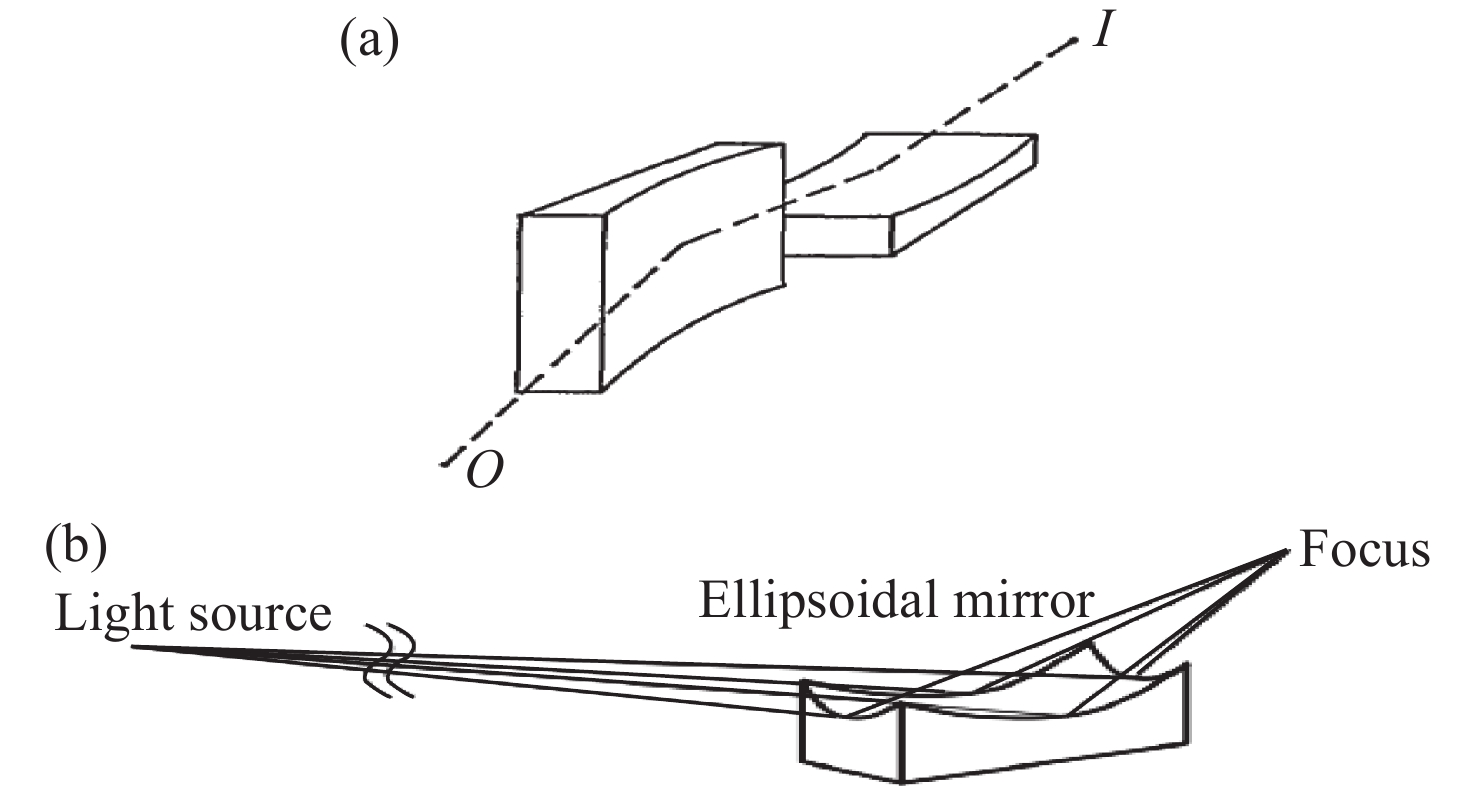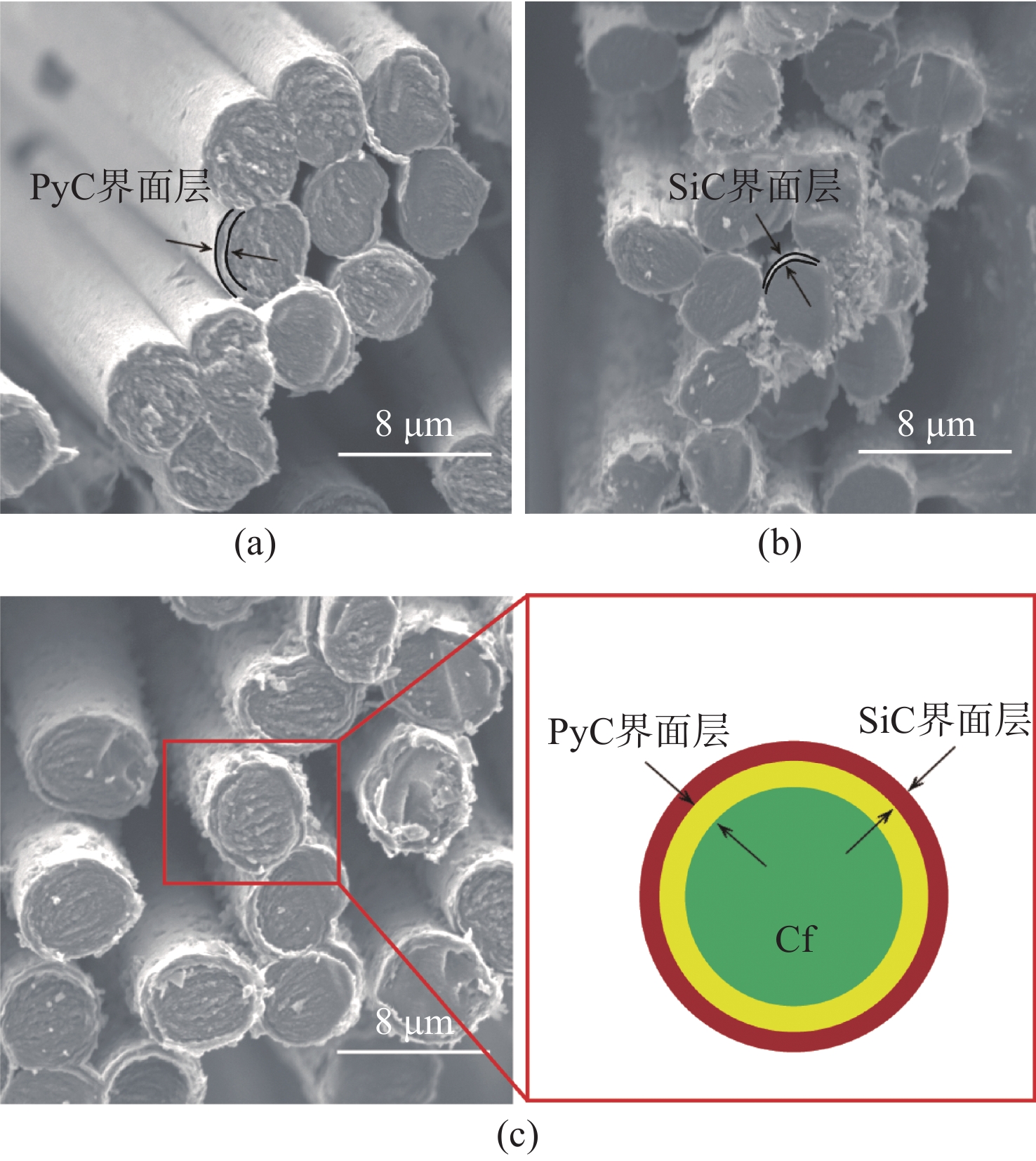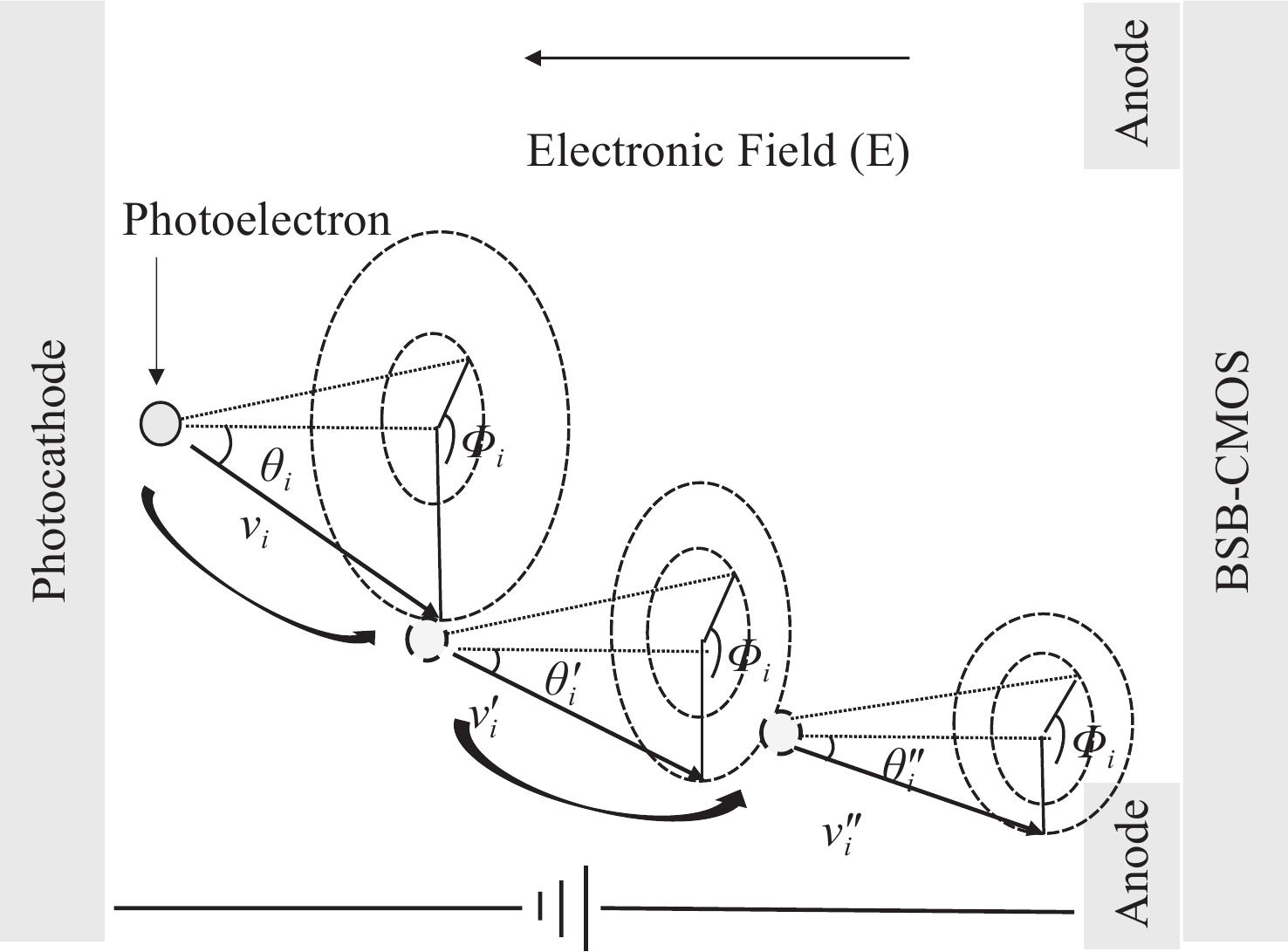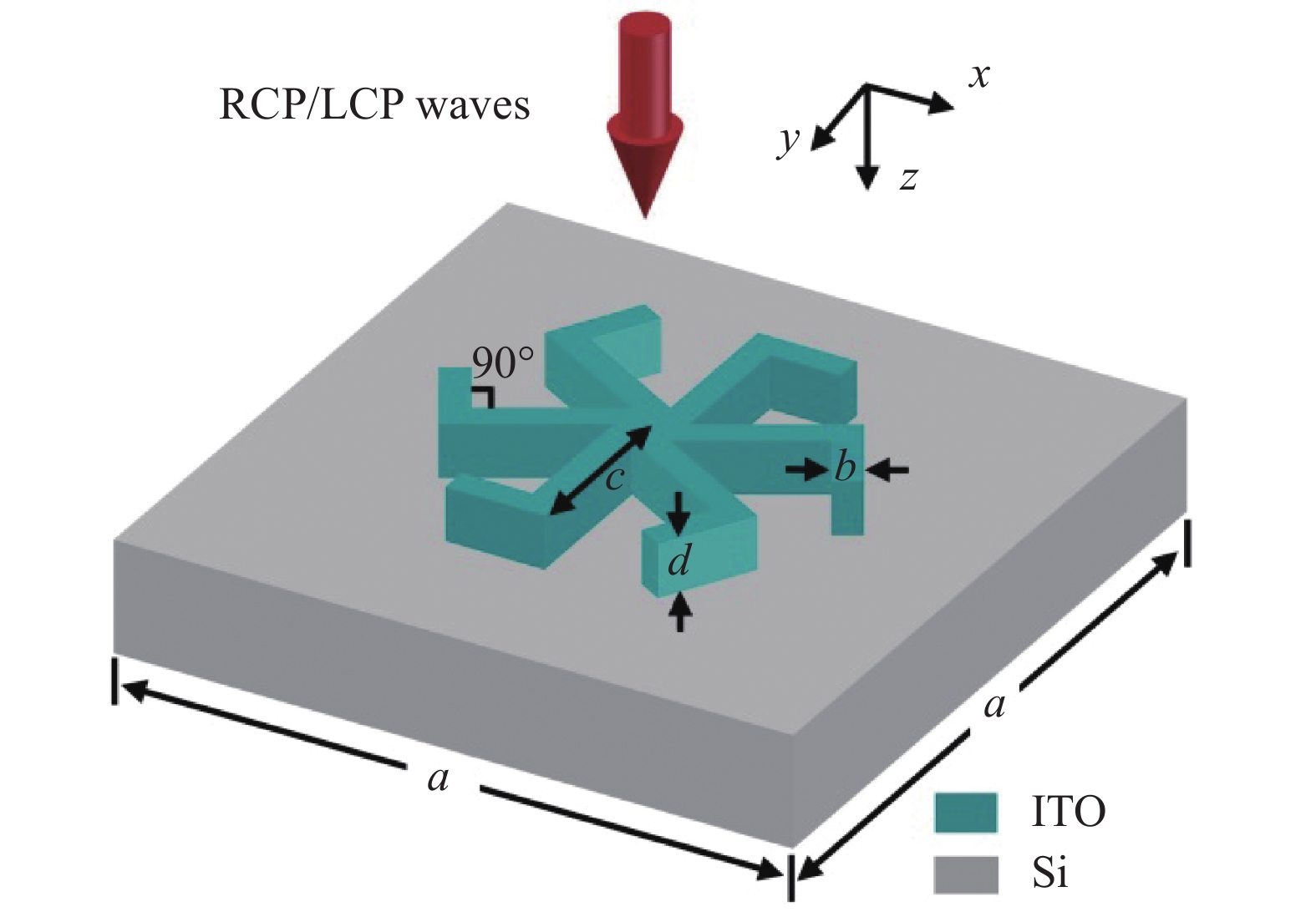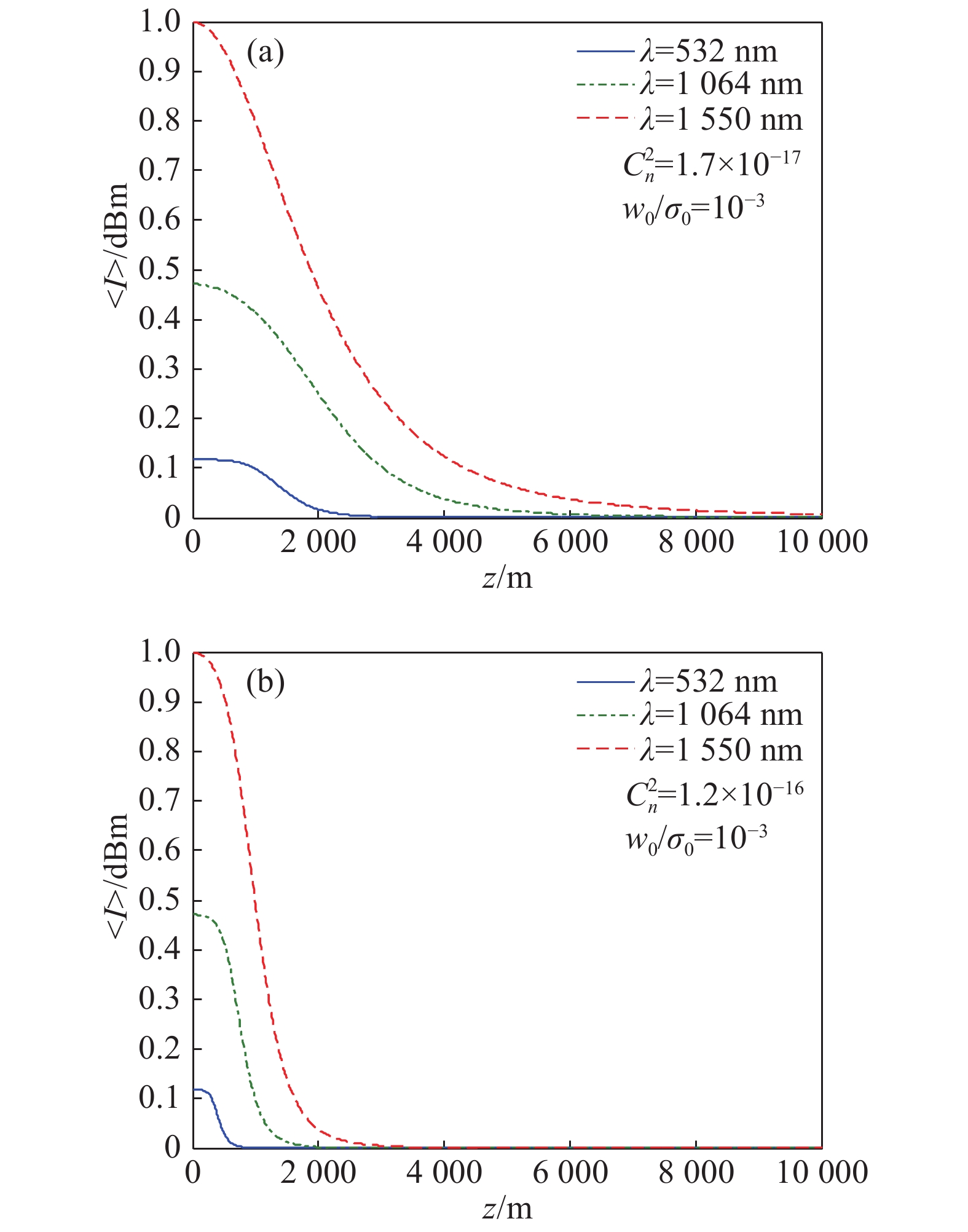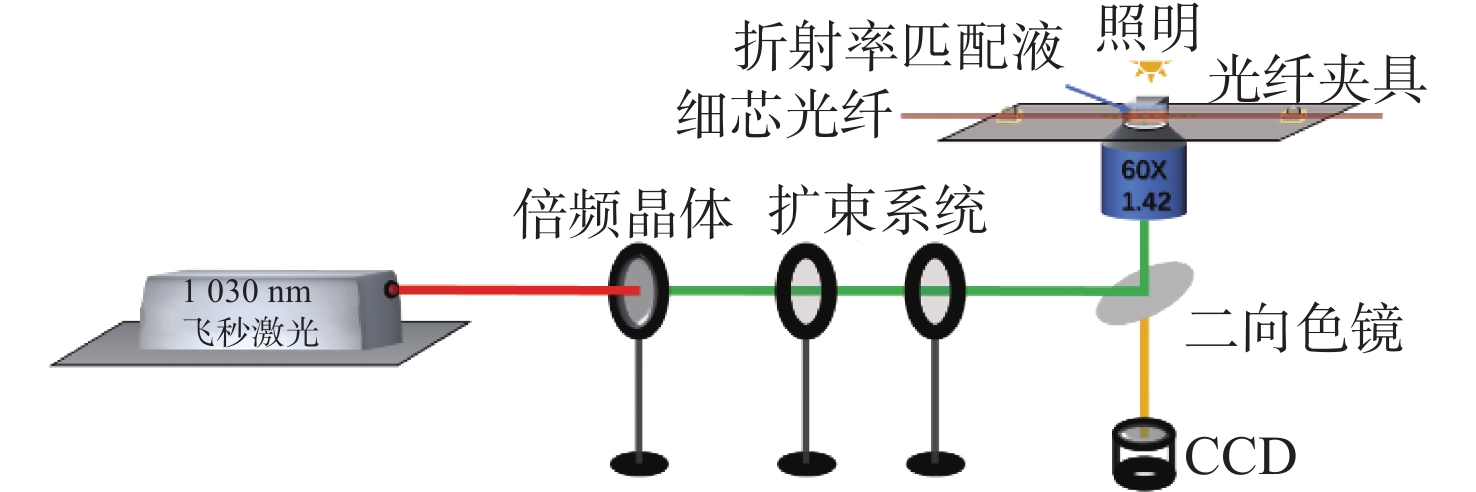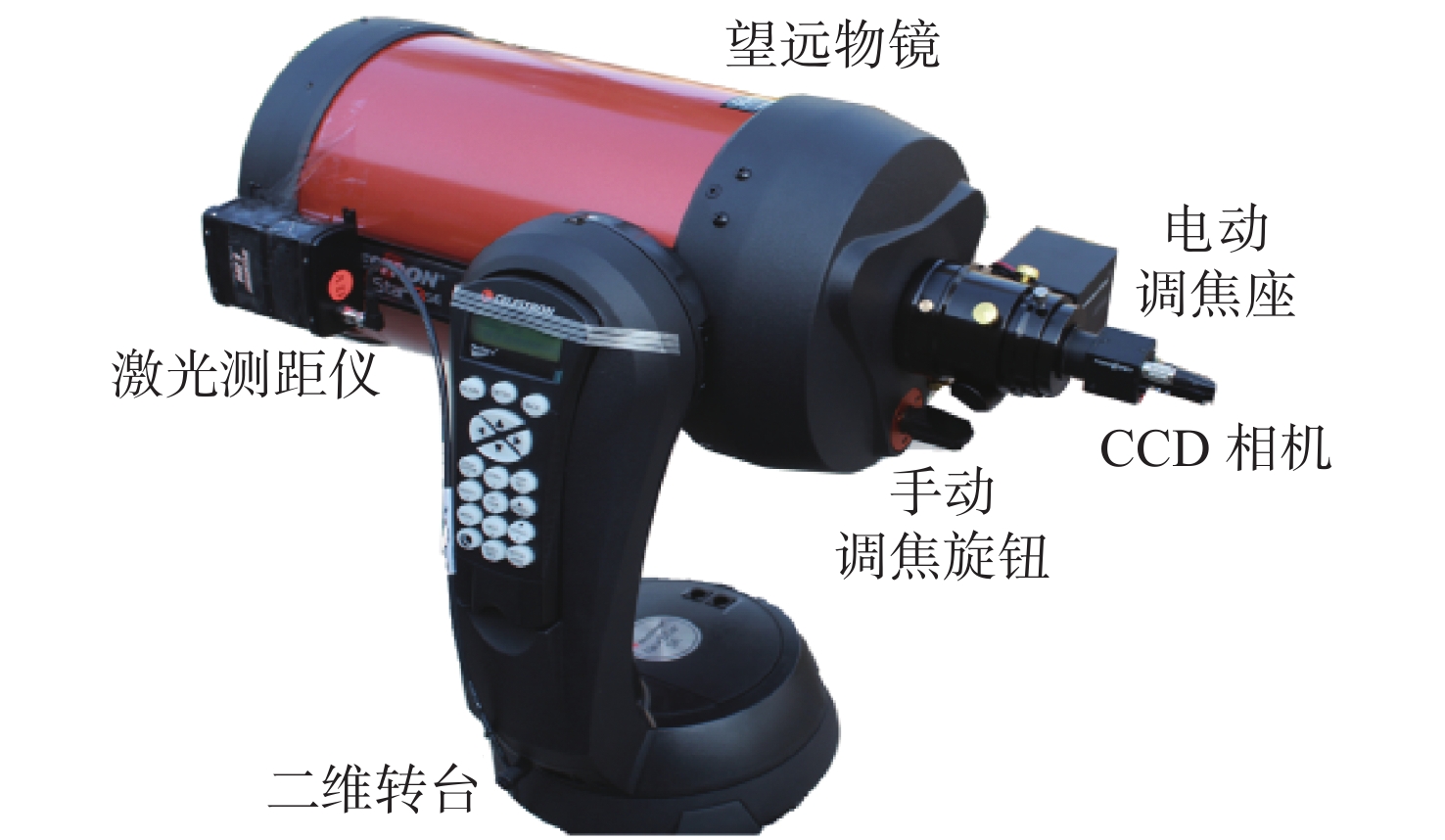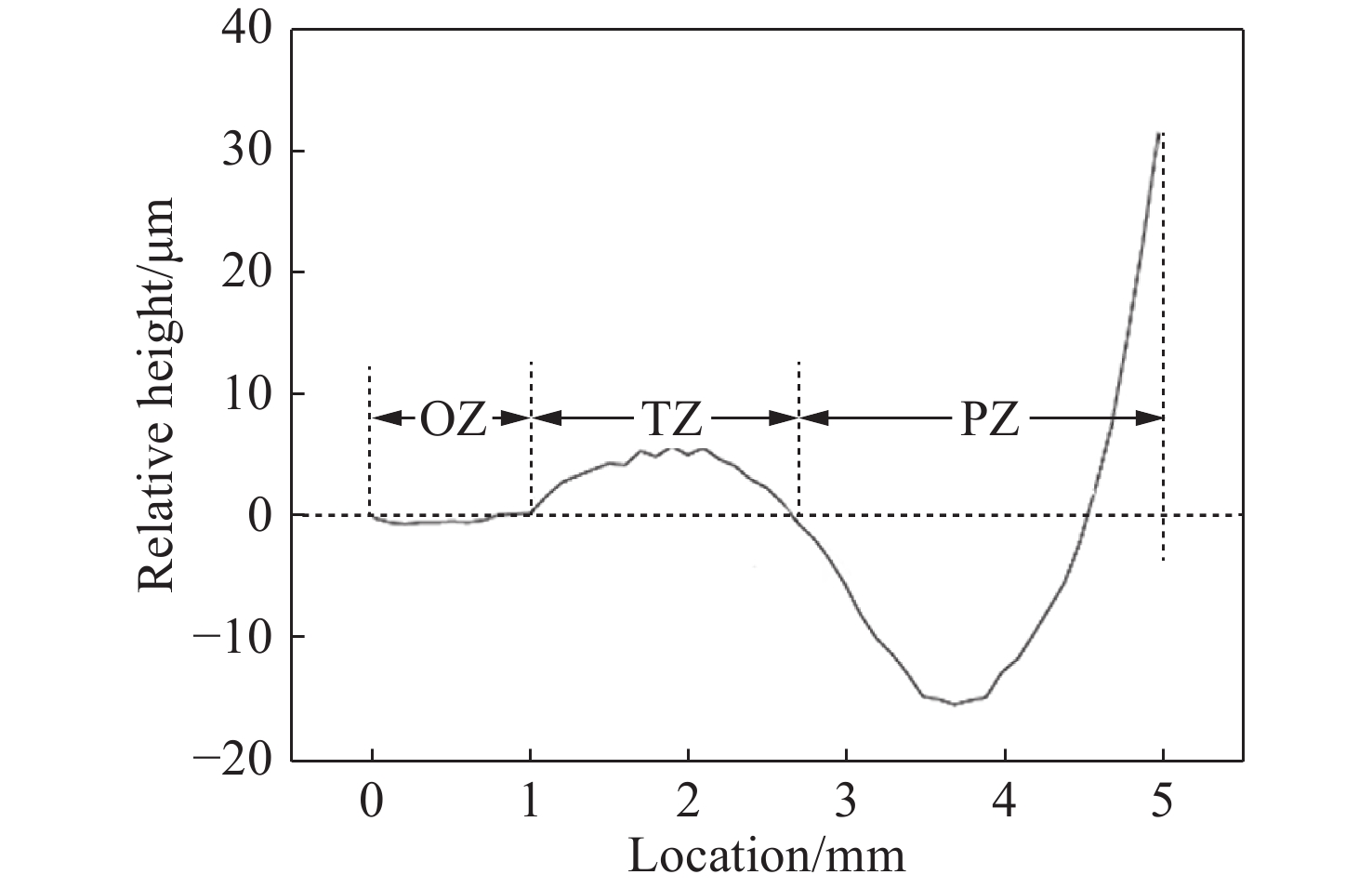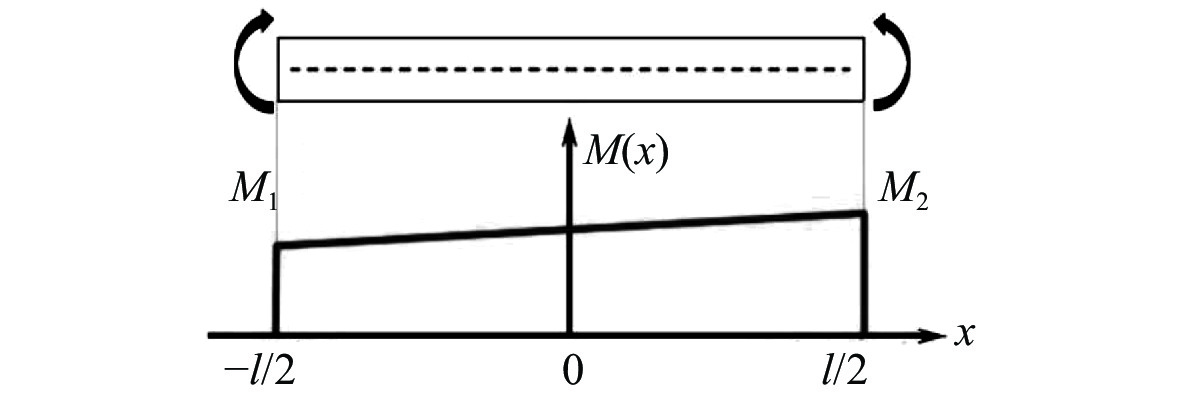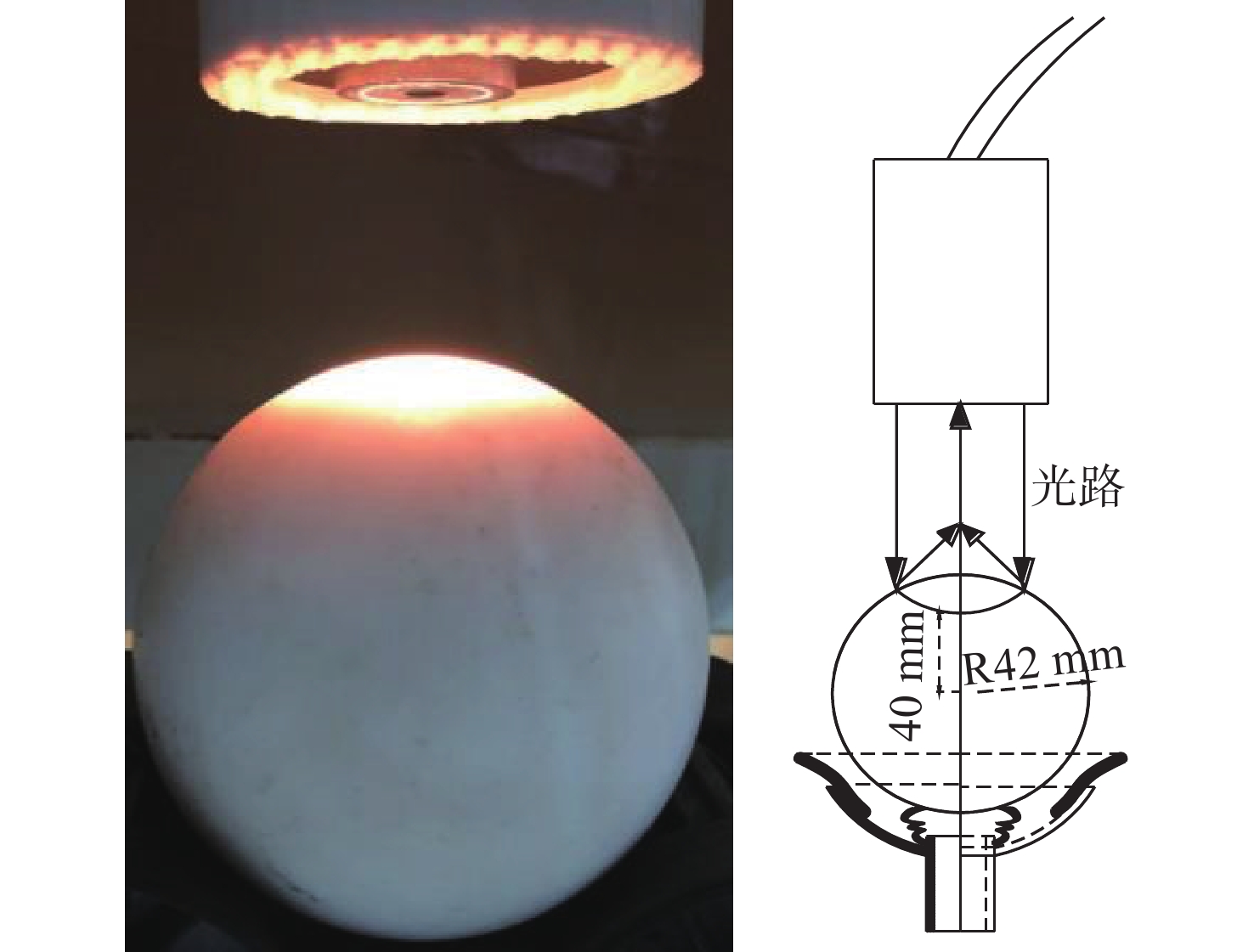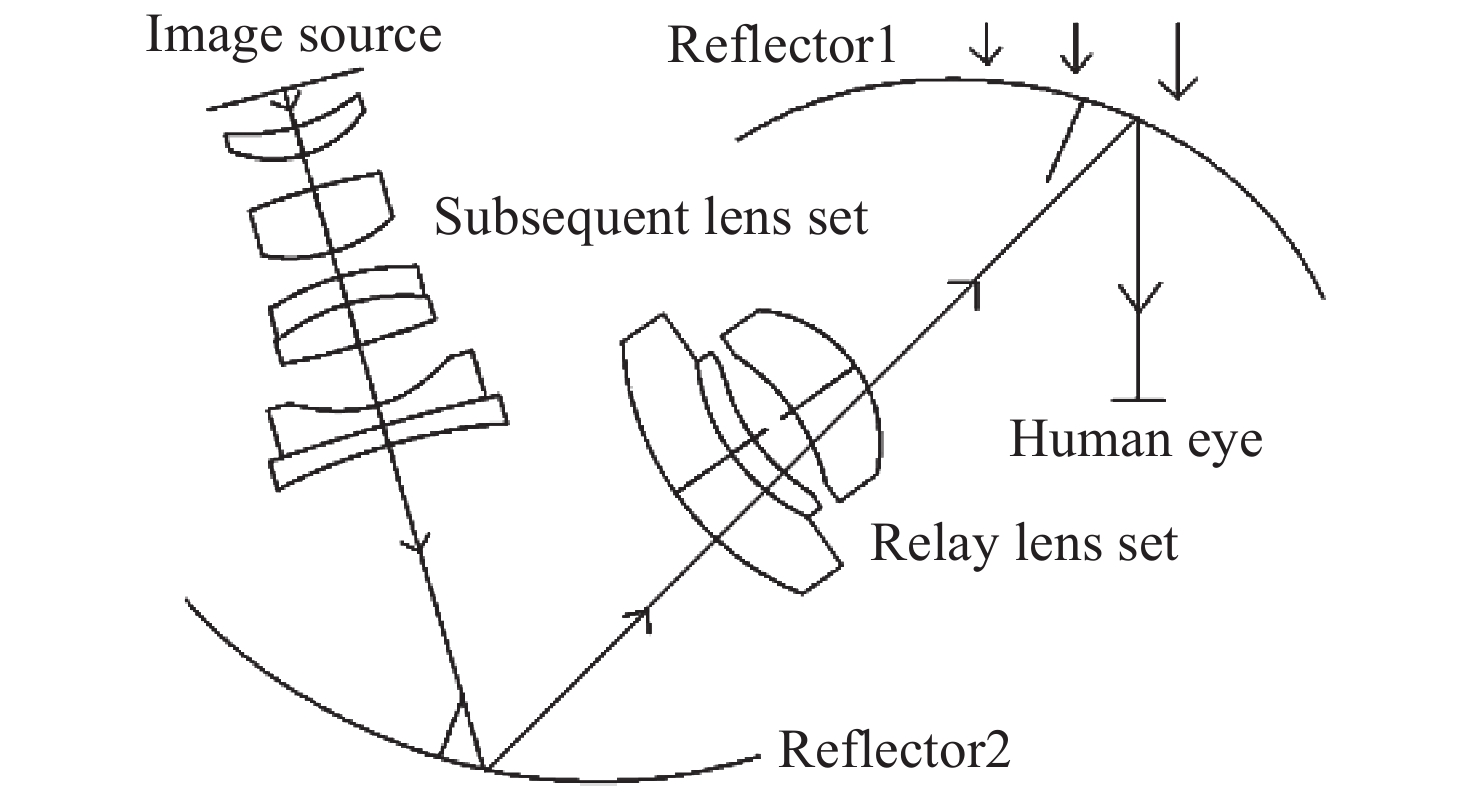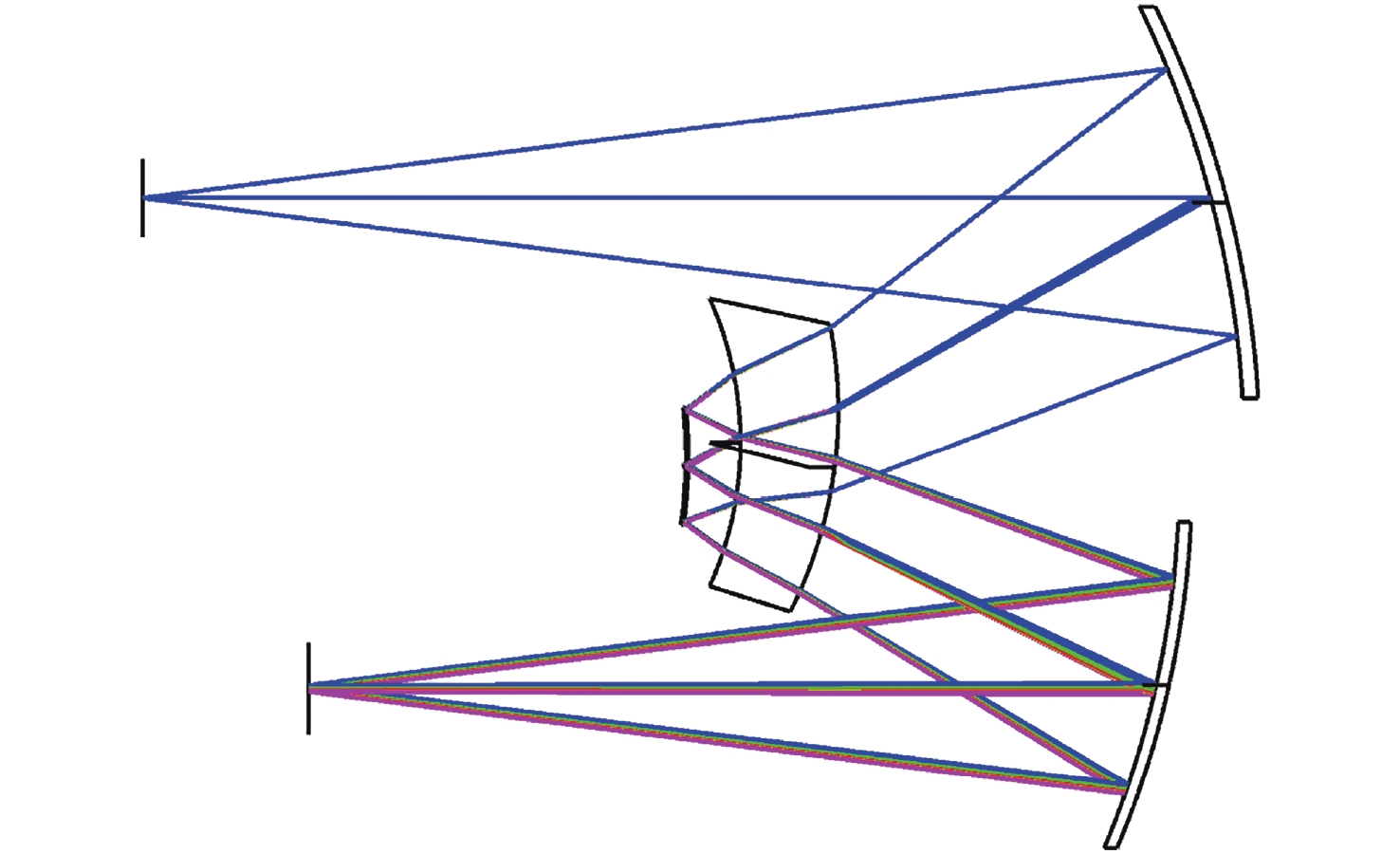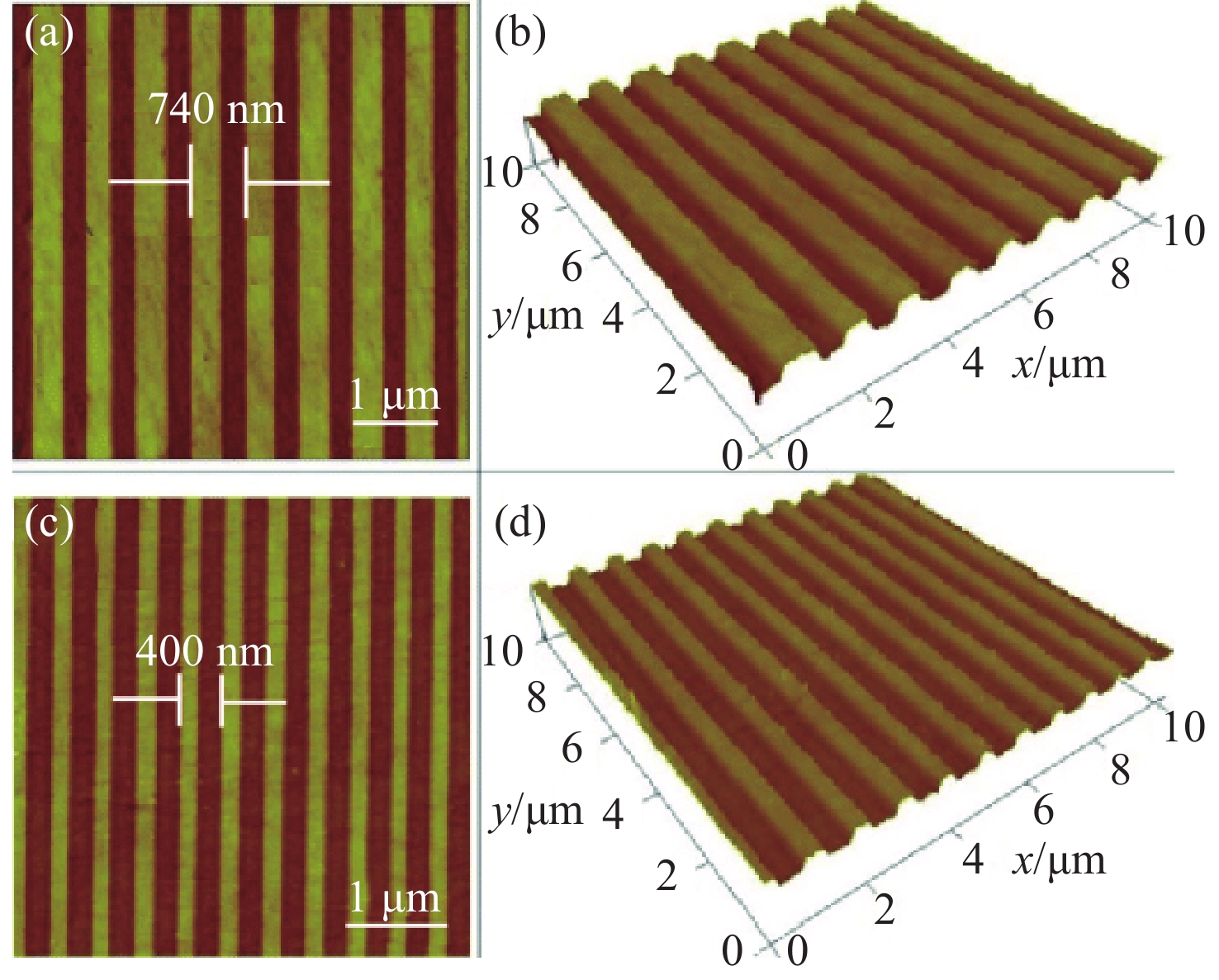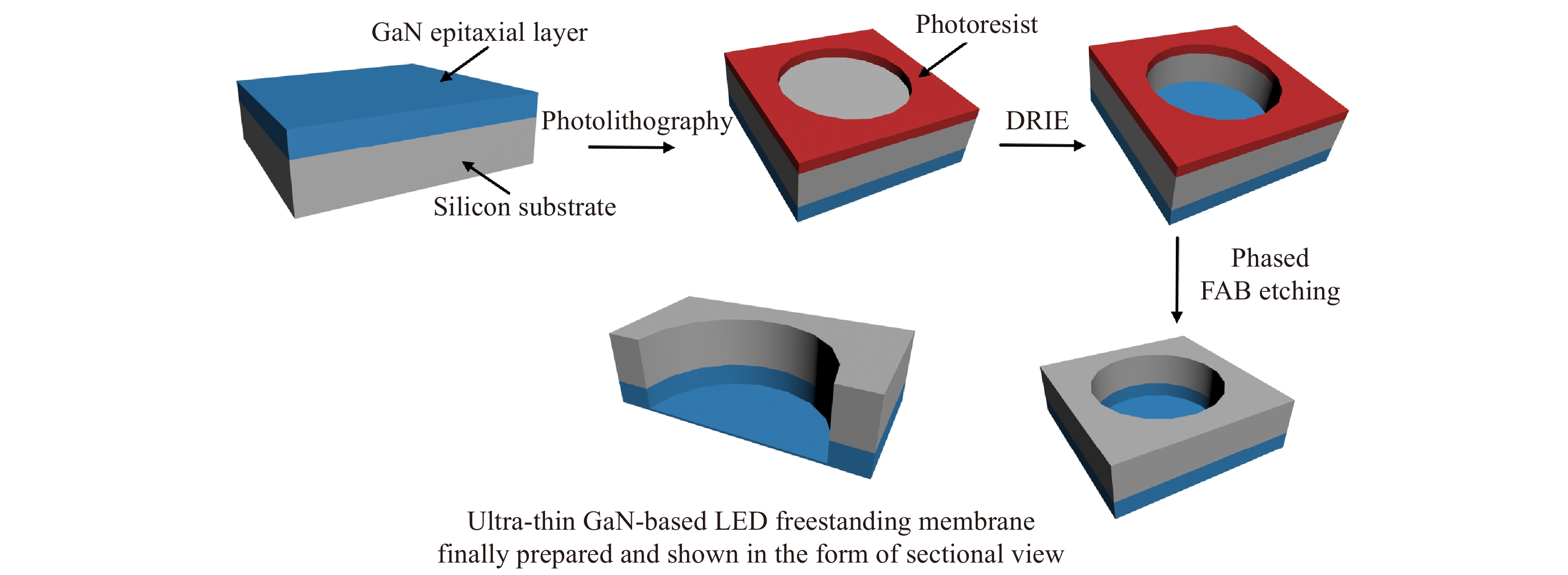2020 Vol. 13, No. 4
2020, 13(4): 647-659.
doi: 10.37188/CO.2019-0241
cstr: 32171.14.CO.2019-0241
Abstract:
Ultrafast laser technology is one of the most active research frontiers in lasers, physics and information science. It is widely applied in industrial processing, biomedicine, lidar and other fields. Because of their unique physical structure and excellent photoelectric properties, two-dimensional materials have a wide operating band, controllable modulation depth and short recovery time when they are employed as saturable absorbers in ultrafast lasers. Among them, transition metal dichalcogenides have become a focus of research because their band-gap is continuously adjustable. In this paper, we introduce the characteristics of transition metal dichalcogenides and the fabrication methods of saturable absorber devices. The research progress of ultrafast lasers based on emerging transition metal dichalcogenides is reviewed, and the development trend is highlighted.
Ultrafast laser technology is one of the most active research frontiers in lasers, physics and information science. It is widely applied in industrial processing, biomedicine, lidar and other fields. Because of their unique physical structure and excellent photoelectric properties, two-dimensional materials have a wide operating band, controllable modulation depth and short recovery time when they are employed as saturable absorbers in ultrafast lasers. Among them, transition metal dichalcogenides have become a focus of research because their band-gap is continuously adjustable. In this paper, we introduce the characteristics of transition metal dichalcogenides and the fabrication methods of saturable absorber devices. The research progress of ultrafast lasers based on emerging transition metal dichalcogenides is reviewed, and the development trend is highlighted.
2020, 13(4): 660-675.
doi: 10.37188/CO.2019-0231
cstr: 32171.14.CO.2019-0231
Abstract:
The advanced light source represented by the new generation of the diffraction limit synchrotron radiation source and the full-coherent X-ray free-electron laser has become an indispensable research tool in many fields. The continuous development of advanced light sources drives the rapid progress of ultra-precision optical manufacturing. The surface precision of a K-B mirror, a key focusing optical element in advanced light sources, is an important factor, which should be less than tens of nano radians. However, high precision K-B mirror surface metrology still has great technical challenges and is now a research hotspot in the scientific community. This paper introduces typical K-B mirror surface metrology, including reflection profile measuring technology such as the Long Trace Profiler (LTP), the Nanometer Optical component Measuring (NOM), and stitching interference metrology. Current K-B mirror surface shape technologies are summarized and the upcoming research progress is prospected.
The advanced light source represented by the new generation of the diffraction limit synchrotron radiation source and the full-coherent X-ray free-electron laser has become an indispensable research tool in many fields. The continuous development of advanced light sources drives the rapid progress of ultra-precision optical manufacturing. The surface precision of a K-B mirror, a key focusing optical element in advanced light sources, is an important factor, which should be less than tens of nano radians. However, high precision K-B mirror surface metrology still has great technical challenges and is now a research hotspot in the scientific community. This paper introduces typical K-B mirror surface metrology, including reflection profile measuring technology such as the Long Trace Profiler (LTP), the Nanometer Optical component Measuring (NOM), and stitching interference metrology. Current K-B mirror surface shape technologies are summarized and the upcoming research progress is prospected.
2020, 13(4): 676-694.
doi: 10.37188/CO.2019-0208
cstr: 32171.14.CO.2019-0208
Abstract:
High power continuous-wave ytterbium-doped fiber lasers have unique advantages such as high electro-optical efficiency, excellent beam quality and good thermal management. For these reasons, these fiber lasers are widely used in industrial processing, national defense and military, and scientific research. However, their non-linear and thermal effects at high-power conditions limit the further improvement of their output power. In this paper, the formation mechanism and corresponding suppression methods of stimulated raman scattering and thermally induced mode instability are analyzed. We hope that these analyses can provide some reference for the design and integration of high-power fiber laser systems. The research results for overcoming these limited factors introduced since 2015 are then discussed in detail. This paper is concluded by predicting the development prospects of high-power continuous-wave ytterbium-doped fiber lasers.
High power continuous-wave ytterbium-doped fiber lasers have unique advantages such as high electro-optical efficiency, excellent beam quality and good thermal management. For these reasons, these fiber lasers are widely used in industrial processing, national defense and military, and scientific research. However, their non-linear and thermal effects at high-power conditions limit the further improvement of their output power. In this paper, the formation mechanism and corresponding suppression methods of stimulated raman scattering and thermally induced mode instability are analyzed. We hope that these analyses can provide some reference for the design and integration of high-power fiber laser systems. The research results for overcoming these limited factors introduced since 2015 are then discussed in detail. This paper is concluded by predicting the development prospects of high-power continuous-wave ytterbium-doped fiber lasers.
2020, 13(4): 695-704.
doi: 10.37188/CO.2020-0052
cstr: 32171.14.CO.2020-0052
Abstract:
Fiber-reinforced silicon carbide composites with excellent mechanical and thermal properties are widely used in aerospace, nuclear energy, automobile, chemical industry and many other fields, especially in optical mirrors. This paper introduces the characteristics of fiber-reinforced silicon carbide composites. The advantages and disadvantages of different preparation processes of fiber-reinforced silicon carbide composites are compared. The protective effects of different interface layers on fibers and composites are expounded. The application progress of fiber-reinforced silicon carbide composites in the field of optical mirrors at home and abroad is summarized. Finally, the research direction to be carried out for realizing large-scale application of fiber-reinforced silicon carbide mirror blanks is analyzed.
Fiber-reinforced silicon carbide composites with excellent mechanical and thermal properties are widely used in aerospace, nuclear energy, automobile, chemical industry and many other fields, especially in optical mirrors. This paper introduces the characteristics of fiber-reinforced silicon carbide composites. The advantages and disadvantages of different preparation processes of fiber-reinforced silicon carbide composites are compared. The protective effects of different interface layers on fibers and composites are expounded. The application progress of fiber-reinforced silicon carbide composites in the field of optical mirrors at home and abroad is summarized. Finally, the research direction to be carried out for realizing large-scale application of fiber-reinforced silicon carbide mirror blanks is analyzed.
2020, 13(4): 705-712.
doi: 10.37188/CO.2019-0217
cstr: 32171.14.CO.2019-0217
Abstract:
When tool setting with digital in-line holography, the zero-order image and defocused twin-image can form strong and complex background noise, which gets superimposed on the real image and seriously reduces the quality of the reconstructed image. To improve quality of interferential images in digital in-line holography, a holographic image enhancement method using an improved self-snake model is proposed. The improved self-snake model selects a diffusion intensity according to the gradient of the initial image. The experimental results show that the improved self-snake model can avoid the appearance of jagged edges and “pseudo-contours” caused by large gradient background noise during the diffusion process. This improvement outweighs the shortcomings of the self-snake model in holographic imaging. In addition, compared with the phase retrieval and multi-plane reproduction approaches, the improved self-snake model filtering method proposed in this paper not only has better suppression for interferential images but also can enhance the edge of the tool, which is conducive to the actualization of tool-setting using on digital in-line holography.
When tool setting with digital in-line holography, the zero-order image and defocused twin-image can form strong and complex background noise, which gets superimposed on the real image and seriously reduces the quality of the reconstructed image. To improve quality of interferential images in digital in-line holography, a holographic image enhancement method using an improved self-snake model is proposed. The improved self-snake model selects a diffusion intensity according to the gradient of the initial image. The experimental results show that the improved self-snake model can avoid the appearance of jagged edges and “pseudo-contours” caused by large gradient background noise during the diffusion process. This improvement outweighs the shortcomings of the self-snake model in holographic imaging. In addition, compared with the phase retrieval and multi-plane reproduction approaches, the improved self-snake model filtering method proposed in this paper not only has better suppression for interferential images but also can enhance the edge of the tool, which is conducive to the actualization of tool-setting using on digital in-line holography.
2020, 13(4): 713-721.
doi: 10.37188/CO.2020-0063
cstr: 32171.14.CO.2020-0063
Abstract:
In order to obtain high-resolution Electron Bombarded CMOS (EBCMOS) imaging devices, we study the effect of electric field distribution on the electron trajectory in proximity focusing EBCMOS devices. Three different electric field distributions are obtained by designing different EBCOMS structure, namely, the nonparallel, partially parallel, and parallel equipotential surfaces between the photocathode and the Back-side Bombarded CMOS (BSB-CMOS). The electron trajectories in each case are simulated according to electromagnetism theory and monte carlo simulation method. The results indicate that, when the BSB-CMOS is bombarded by photoelectrons, the scattering diameter can be reduced to 30 μm under the condition that the surface of the electron multiplying layer is covered with 30 nm ultra-thin heavily doping layer and the voltage between electrodes is maintained at 4000 V while the distance between photocathode and BSB-CMOS is 1 mm. This structure is helpful to realize electrons focusing and achieve EBCMOS with high resolution. Then, the influence of the distance and voltage between the photocathode and BSB-CMOS on scattering diameter is studied. The results indicate that the electric field strength increases with the decrease of proximity distance and the increase of the acceleration voltage. This work will provide theoretical guidance for improving the resolution characteristics of EBCMOS imaging devices.
In order to obtain high-resolution Electron Bombarded CMOS (EBCMOS) imaging devices, we study the effect of electric field distribution on the electron trajectory in proximity focusing EBCMOS devices. Three different electric field distributions are obtained by designing different EBCOMS structure, namely, the nonparallel, partially parallel, and parallel equipotential surfaces between the photocathode and the Back-side Bombarded CMOS (BSB-CMOS). The electron trajectories in each case are simulated according to electromagnetism theory and monte carlo simulation method. The results indicate that, when the BSB-CMOS is bombarded by photoelectrons, the scattering diameter can be reduced to 30 μm under the condition that the surface of the electron multiplying layer is covered with 30 nm ultra-thin heavily doping layer and the voltage between electrodes is maintained at 4000 V while the distance between photocathode and BSB-CMOS is 1 mm. This structure is helpful to realize electrons focusing and achieve EBCMOS with high resolution. Then, the influence of the distance and voltage between the photocathode and BSB-CMOS on scattering diameter is studied. The results indicate that the electric field strength increases with the decrease of proximity distance and the increase of the acceleration voltage. This work will provide theoretical guidance for improving the resolution characteristics of EBCMOS imaging devices.
2020, 13(4): 722-727.
doi: 10.37188/CO.2019-0190
cstr: 32171.14.CO.2019-0190
Abstract:
A mid-infrared chiral metamaterial was designed to overcome the problems of large volume and high cost of traditional mid-infrared laser polarization state controls, The fan-shaped chiral structure material made of Indium Tin Oxide (ITO) was designed and its Circular Dichroism (CD) characteristics in the mid-infrared band were studied. The CD variation characteristics of the structure were discussed by changing the filling material, the thickness, the size, the number, and the material of fan blades. The simulation results show that when the filling material is silicon and the number of fan blade is six, the strongest CD signal of 0.052 is obtained near the wavelength of 5.3 μm by selecting the appropriate fan thickness and size. Moreover, compared with the silver and gold, the structure made of ITO exhibits broadband circular dichroism, which provides a new idea for the design of broadband polarization-state control devices in the mid-infrared band.
A mid-infrared chiral metamaterial was designed to overcome the problems of large volume and high cost of traditional mid-infrared laser polarization state controls, The fan-shaped chiral structure material made of Indium Tin Oxide (ITO) was designed and its Circular Dichroism (CD) characteristics in the mid-infrared band were studied. The CD variation characteristics of the structure were discussed by changing the filling material, the thickness, the size, the number, and the material of fan blades. The simulation results show that when the filling material is silicon and the number of fan blade is six, the strongest CD signal of 0.052 is obtained near the wavelength of 5.3 μm by selecting the appropriate fan thickness and size. Moreover, compared with the silver and gold, the structure made of ITO exhibits broadband circular dichroism, which provides a new idea for the design of broadband polarization-state control devices in the mid-infrared band.
2020, 13(4): 728-736.
doi: 10.37188/CO.2019-0194
cstr: 32171.14.CO.2019-0194
Abstract:
In this paper, the cross-spectral density function of target reflected light in laser detection is obtained by using generalized Huygens-Fresnel principle and Goodman target scattering theory. On the basis of above, the expression of intensity distribution and spatial coherence length of target reflected light is derived. The influence of different light source and target reflected light parameters on the intensity distribution and coherent length of the target reflected light is simulated by using the expressions obtained in this paper under turbulent atmospheric conditions. The results show that the coherence length of the light source has little effect on the normalized light intensity distribution; the coherence length of the received light is smaller with a larger beam waist radius and reflected light radius, and the coherence length increases at a slower rate as the transmission distance increases. In the process of weak turbulent atmospheric transmission, the influence of light source parameters on the received light is much stronger. The larger the beam waist radius, the smaller the received light intensity and coherence length value. During strong turbulent atmospheric transmission, the influence of atmospheric turbulence on the received light is dominant.
In this paper, the cross-spectral density function of target reflected light in laser detection is obtained by using generalized Huygens-Fresnel principle and Goodman target scattering theory. On the basis of above, the expression of intensity distribution and spatial coherence length of target reflected light is derived. The influence of different light source and target reflected light parameters on the intensity distribution and coherent length of the target reflected light is simulated by using the expressions obtained in this paper under turbulent atmospheric conditions. The results show that the coherence length of the light source has little effect on the normalized light intensity distribution; the coherence length of the received light is smaller with a larger beam waist radius and reflected light radius, and the coherence length increases at a slower rate as the transmission distance increases. In the process of weak turbulent atmospheric transmission, the influence of light source parameters on the received light is much stronger. The larger the beam waist radius, the smaller the received light intensity and coherence length value. During strong turbulent atmospheric transmission, the influence of atmospheric turbulence on the received light is dominant.
2020, 13(4): 737-744.
doi: 10.37188/CO.2020-0015
cstr: 32171.14.CO.2020-0015
Abstract:
In order to reduce crosstalk caused by temperature during refractive index and strain testing, the temperature, refractive index and strain response characteristics of fine-core long-period fiber gratings were studied. A long-period fiber grating with a period of 50 μm was successfully prepared on a single-mode fiber with a core diameter of 6 μm using the femtosecond laser direct writing method. The results show that long-period fiber gratings processed with low laser energy in fine-core fibers have lower temperature sensitivity, and maintain a larger extinction ratio and better spectral quality. The loss peak of this fine-core long-period fiber grating drifts only 1.7 nm in the 20~700 °C temperature range. The grating is also highly responsive to changes in the refractive index. when ambient refractive index is in the range of 1.4065~1.4265, its sensitivity reaches 882.51 nm/RIU, and its strain sensitivity is −2.2 pm/με. This fine-core long-period fiber grating can better reduce crosstalk caused by temperature in the refractive index and strain tests.
In order to reduce crosstalk caused by temperature during refractive index and strain testing, the temperature, refractive index and strain response characteristics of fine-core long-period fiber gratings were studied. A long-period fiber grating with a period of 50 μm was successfully prepared on a single-mode fiber with a core diameter of 6 μm using the femtosecond laser direct writing method. The results show that long-period fiber gratings processed with low laser energy in fine-core fibers have lower temperature sensitivity, and maintain a larger extinction ratio and better spectral quality. The loss peak of this fine-core long-period fiber grating drifts only 1.7 nm in the 20~700 °C temperature range. The grating is also highly responsive to changes in the refractive index. when ambient refractive index is in the range of 1.4065~1.4265, its sensitivity reaches 882.51 nm/RIU, and its strain sensitivity is −2.2 pm/με. This fine-core long-period fiber grating can better reduce crosstalk caused by temperature in the refractive index and strain tests.
2020, 13(4): 745-751.
doi: 10.37188/CO.2019-0191
cstr: 32171.14.CO.2019-0191
Abstract:
Frequency-locked multicarrier with high repetition rate is an ideal tool for microwave channelization and optical communications. To meet the needs of those applications, we propose a multicarrier laser with a repetition frequency of 49 GHz. The I/Q Modulator (IQM) works at the Single-Frequency Shifting (SSB) state by carefully optimizing the Radio Frequencies (RFs) and their three bias points, resulting in a signal-to-noise ratio of 27.5 dB. The Recirculating Frequency Shifter (RFS) architecture is employed to generate an optical comb with high flatness. By optimizing the power of RFs for the balance of gain and loss of intracavity, we successfully generate 28 frequency-locked subcarriers with flatnesses lower than 3 dB and Tone-to-Noise Ratios (TNR) larger than 29 dB. Meanwhile, an Fabry-Perot (FP) etalon is used to increase the repetition-rate, resulting in 14 frequency-locked subcarriers with flatnesses lower than 2.7 dB, TNR larger than 19 dB, average powers of more than 9 dBm and carrier spacings at 49 GHz. By applying all-polarization-maintaining components and integrated technology, the system shows one-push and long-term running properties. The standard deviation of power jitter of the multi-carrier frequency comb through the half hour is only 0.5%, which shows that this scheme has great potential applications in channel communications and microwave channelization.
Frequency-locked multicarrier with high repetition rate is an ideal tool for microwave channelization and optical communications. To meet the needs of those applications, we propose a multicarrier laser with a repetition frequency of 49 GHz. The I/Q Modulator (IQM) works at the Single-Frequency Shifting (SSB) state by carefully optimizing the Radio Frequencies (RFs) and their three bias points, resulting in a signal-to-noise ratio of 27.5 dB. The Recirculating Frequency Shifter (RFS) architecture is employed to generate an optical comb with high flatness. By optimizing the power of RFs for the balance of gain and loss of intracavity, we successfully generate 28 frequency-locked subcarriers with flatnesses lower than 3 dB and Tone-to-Noise Ratios (TNR) larger than 29 dB. Meanwhile, an Fabry-Perot (FP) etalon is used to increase the repetition-rate, resulting in 14 frequency-locked subcarriers with flatnesses lower than 2.7 dB, TNR larger than 19 dB, average powers of more than 9 dBm and carrier spacings at 49 GHz. By applying all-polarization-maintaining components and integrated technology, the system shows one-push and long-term running properties. The standard deviation of power jitter of the multi-carrier frequency comb through the half hour is only 0.5%, which shows that this scheme has great potential applications in channel communications and microwave channelization.
2020, 13(4): 752-759.
doi: 10.37188/CO.2019-0214
cstr: 32171.14.CO.2019-0214
Abstract:
In narrow spaces, vehicles, carriers or for single guards on duty, traditional displays have a dilemma wherein it is difficult to balance a display’s field of view and its resolution. This paper studies panoramic/periodic imaging technology and a system based on deformable eyepieces, which is expected to provide a technical solution to effectively solve the above problems. The system uses three low-light cameras with 4 mm focal length lens to form a panoramic imaging field of view of 150°. Panoramic image analysis, stitching, correction, and display are carried out by adopted FPGA processing platform. It also has a real-time zoom display; a display system consisting of OLED micro-displays, an anamorphic eyepiece group and large eyepiece enlarges the video image horizontally by a factor of 3 and displays a panoramic high-resolution dynamic scene image in real time. The experiment verifies the feasibility of a day and night panoramic imaging display. The system has a wide array of possible applications inside and outside of the military.
In narrow spaces, vehicles, carriers or for single guards on duty, traditional displays have a dilemma wherein it is difficult to balance a display’s field of view and its resolution. This paper studies panoramic/periodic imaging technology and a system based on deformable eyepieces, which is expected to provide a technical solution to effectively solve the above problems. The system uses three low-light cameras with 4 mm focal length lens to form a panoramic imaging field of view of 150°. Panoramic image analysis, stitching, correction, and display are carried out by adopted FPGA processing platform. It also has a real-time zoom display; a display system consisting of OLED micro-displays, an anamorphic eyepiece group and large eyepiece enlarges the video image horizontally by a factor of 3 and displays a panoramic high-resolution dynamic scene image in real time. The experiment verifies the feasibility of a day and night panoramic imaging display. The system has a wide array of possible applications inside and outside of the military.
2020, 13(4): 760-769.
doi: 10.37188/CO.2019-0247
cstr: 32171.14.CO.2019-0247
Abstract:
A new defocusing estimation algorithm based on the response curve of a circular edge is proposed, through which the calibration of some focusing parameters and the automatic focusing of the telescope objective lens are achieved. The relationship between the gray-scale response of the edge of the circular pattern and the defocusing radius is established. Using the double threshold mean filtering of the defocusing radius around the circle, the accurate defocus radius of the blurred image is calculated and the influence of motion blur and noise is reduced. According to the linear relationship between defocus radius and focus distance, the broken line fitting method is used to obtain the focus distance. Then, by using multiple object and focus image distances, the parameters of the focusing model of the ranging method are optimized and the automatic focusing of the imaging system is achieved. Through simulation and experimentation, the feasibility and robustness of the defocusing estimation algorithm are verified. The images taken by the calibrated autofocus imaging system are clear, have a physical resolution that reaches half of their theoretical value, and have a resolvable line width better than 0.354 mm when the shooting distance is between 43 m and 52 m.
A new defocusing estimation algorithm based on the response curve of a circular edge is proposed, through which the calibration of some focusing parameters and the automatic focusing of the telescope objective lens are achieved. The relationship between the gray-scale response of the edge of the circular pattern and the defocusing radius is established. Using the double threshold mean filtering of the defocusing radius around the circle, the accurate defocus radius of the blurred image is calculated and the influence of motion blur and noise is reduced. According to the linear relationship between defocus radius and focus distance, the broken line fitting method is used to obtain the focus distance. Then, by using multiple object and focus image distances, the parameters of the focusing model of the ranging method are optimized and the automatic focusing of the imaging system is achieved. Through simulation and experimentation, the feasibility and robustness of the defocusing estimation algorithm are verified. The images taken by the calibrated autofocus imaging system are clear, have a physical resolution that reaches half of their theoretical value, and have a resolvable line width better than 0.354 mm when the shooting distance is between 43 m and 52 m.
2020, 13(4): 770-777.
doi: 10.37188/CO.2019-0248
cstr: 32171.14.CO.2019-0248
Abstract:
A new method of corneal shape analysis method is proposed. It not only eliminates the influence of corneal thickness on the shape of cornea after orthokeratology, but also reflects the asymmetry of a cornea. A reference surface is introduced into the analysis of the height data of the anterior surface of the cornea to eliminate the influence of corneal thickness. On the basis of above, anterior surface of the cornea is divided into the optical zone, transition zone and peripheral zone. The results show that the optical zone diameter is (1.9±0.27) mm, and the curvature radius is (8.32±0.38) mm; the transition zone diameter is (6.56±0.38) mm, and the curvature radius is (7.48±0.55) mm; the curvature radius of the peripheral zone is (10.49±1.83) mm. After orthokeratology, the horizontal refraction of the transition zone is lower than its vertical refraction. The refraction of the nasal side is greater than that of the temporal side and the refraction of the upper side is greater than that of the lower side. A semi-customized eye model is established based on the obtained parameters and the results show that its peripheral defocus is myopic after orthokeratology and its defocus is asymmetrical in each direction, which is consistent with clinical observations.
A new method of corneal shape analysis method is proposed. It not only eliminates the influence of corneal thickness on the shape of cornea after orthokeratology, but also reflects the asymmetry of a cornea. A reference surface is introduced into the analysis of the height data of the anterior surface of the cornea to eliminate the influence of corneal thickness. On the basis of above, anterior surface of the cornea is divided into the optical zone, transition zone and peripheral zone. The results show that the optical zone diameter is (1.9±0.27) mm, and the curvature radius is (8.32±0.38) mm; the transition zone diameter is (6.56±0.38) mm, and the curvature radius is (7.48±0.55) mm; the curvature radius of the peripheral zone is (10.49±1.83) mm. After orthokeratology, the horizontal refraction of the transition zone is lower than its vertical refraction. The refraction of the nasal side is greater than that of the temporal side and the refraction of the upper side is greater than that of the lower side. A semi-customized eye model is established based on the obtained parameters and the results show that its peripheral defocus is myopic after orthokeratology and its defocus is asymmetrical in each direction, which is consistent with clinical observations.
2020, 13(4): 778-786.
doi: 10.37188/CO.2019-0250
cstr: 32171.14.CO.2019-0250
Abstract:
In this paper, the surface shape error of latest elliptical bending mechanism with a constant cross-section mirror is studied when the object distance is fixed (when the position of the mirror in the light path is invariable) and the image distance is adjusted drastically (when the position of the sample is changed). Based on theoretical analysis and the finite element analysis, theoretical slope error is calculated when it is caused by bending a mirror with a width equal to an elliptical cylinder with a different shape (different image distances at the reflection point). Then, a bending experiment of a prototype of the elliptical bending mechanism is conducted. Experimental results and analysis indicate that the slope error between the bending mirror and an ideal elliptic cylinder will increase with a decrease in image distance, and the slope error of the mirror will increase more quickly as the image distance is shortened. When the initial slope error of the reflecting mirror is 0.397 μrad, the slope error of the bent mirror in the whole range of image distance (21.5~3.8 m) is 0.402~0.560 μrad and the repeatable accuracy is 0.051 urad, which meets the design requirements of the beamline of the Shanghai Synchrotron Radiation Facility (SSRF). It is proven that in elliptically bending mirrors, continuous adjustment of the image distance from the focusing mirror can be achieved by using a bending mechanism with constant cross-section mirror.
In this paper, the surface shape error of latest elliptical bending mechanism with a constant cross-section mirror is studied when the object distance is fixed (when the position of the mirror in the light path is invariable) and the image distance is adjusted drastically (when the position of the sample is changed). Based on theoretical analysis and the finite element analysis, theoretical slope error is calculated when it is caused by bending a mirror with a width equal to an elliptical cylinder with a different shape (different image distances at the reflection point). Then, a bending experiment of a prototype of the elliptical bending mechanism is conducted. Experimental results and analysis indicate that the slope error between the bending mirror and an ideal elliptic cylinder will increase with a decrease in image distance, and the slope error of the mirror will increase more quickly as the image distance is shortened. When the initial slope error of the reflecting mirror is 0.397 μrad, the slope error of the bent mirror in the whole range of image distance (21.5~3.8 m) is 0.402~0.560 μrad and the repeatable accuracy is 0.051 urad, which meets the design requirements of the beamline of the Shanghai Synchrotron Radiation Facility (SSRF). It is proven that in elliptically bending mirrors, continuous adjustment of the image distance from the focusing mirror can be achieved by using a bending mechanism with constant cross-section mirror.
2020, 13(4): 787-794.
doi: 10.37188/CO.2019-0131
cstr: 32171.14.CO.2019-0131
Abstract:
The reflector is an important optical element in free-electron laser beamlines. Deformation error caused by gravity can seriously affect the image quality of a beamline. To reduce deformation error, a gravity compensation scheme based on the Bessel point theory is proposed and a stress-free clamping device is designed. Taking a 440 mm × 50 mm × 50 mm mirror as an example, the analysis results indicate that the deformation error in the bottom surface of a mirror clamped with the traditional support method is 1.647 μrad. Adopting the newly designed device proposed in this paper, the results of a finite element analysis showed that the deformation error reduced to 0.085 7 μrad, which is better than the engineering index of 0.1 μrad. To prevent the mirror from moving when switching modes, a small clamping force of no more than 2 N can be added to the mirror, at which point the surface error of the mirror becomes 0.093 9 μrad. Additionally, a dynamic analysis of the device is also carried out, which indicates that the device mutes the low natural frequency, which means that resonance will not occur during operation. Therefore, this scheme satisfies our requirements for the beamline.
The reflector is an important optical element in free-electron laser beamlines. Deformation error caused by gravity can seriously affect the image quality of a beamline. To reduce deformation error, a gravity compensation scheme based on the Bessel point theory is proposed and a stress-free clamping device is designed. Taking a 440 mm × 50 mm × 50 mm mirror as an example, the analysis results indicate that the deformation error in the bottom surface of a mirror clamped with the traditional support method is 1.647 μrad. Adopting the newly designed device proposed in this paper, the results of a finite element analysis showed that the deformation error reduced to 0.085 7 μrad, which is better than the engineering index of 0.1 μrad. To prevent the mirror from moving when switching modes, a small clamping force of no more than 2 N can be added to the mirror, at which point the surface error of the mirror becomes 0.093 9 μrad. Additionally, a dynamic analysis of the device is also carried out, which indicates that the device mutes the low natural frequency, which means that resonance will not occur during operation. Therefore, this scheme satisfies our requirements for the beamline.
2020, 13(4): 795-804.
doi: 10.37188/CO.2019-0165
cstr: 32171.14.CO.2019-0165
Abstract:
Traditional quality sorting methods have been unable to meet people's increasing demands for fruit flavour and quality. Producers must therefore develop their traditional quality sorting methods to achieve sugar content sorting and ensure favourable flavour and quality. To address this, the near-infrared reflection spectra of navel oranges were collected separately through two different detection methods. The spectral energy of their ring transmission and diffuse reflection had to be stronger than that of the multi-point transmission and diffuse reflections. The positions of their peaks and troughs had to be approximately the same. The near-infrared diffuse reflectance spectra were preprocessed using baseline correction, multivariate scattering correction, first and second derivatives to reduce the influence of stray light and noise. A Partial Least Squares (PLS) model for the sugar content information that was collected through the two different reflection detection methods was established for their comparison and analysis. The experimental results show that the baseline correction preprocessing method produced the best results between the two methods. Its predicted correlation coefficient of sugar under ring transmission and diffuse reflection detection was 0.81 and its root mean square error was 0.46° Brix. The estimated correlation coefficient of the sugar content model using the multi-point transmission and diffuse reflection detection method was 0.76 and its root mean square error was 0.53° Brix. This research shows that it is feasible to use PLS modeling and near-infrared diffuse reflectance spectrum to upgrade the sugar content sorting methodology used on production lines.
Traditional quality sorting methods have been unable to meet people's increasing demands for fruit flavour and quality. Producers must therefore develop their traditional quality sorting methods to achieve sugar content sorting and ensure favourable flavour and quality. To address this, the near-infrared reflection spectra of navel oranges were collected separately through two different detection methods. The spectral energy of their ring transmission and diffuse reflection had to be stronger than that of the multi-point transmission and diffuse reflections. The positions of their peaks and troughs had to be approximately the same. The near-infrared diffuse reflectance spectra were preprocessed using baseline correction, multivariate scattering correction, first and second derivatives to reduce the influence of stray light and noise. A Partial Least Squares (PLS) model for the sugar content information that was collected through the two different reflection detection methods was established for their comparison and analysis. The experimental results show that the baseline correction preprocessing method produced the best results between the two methods. Its predicted correlation coefficient of sugar under ring transmission and diffuse reflection detection was 0.81 and its root mean square error was 0.46° Brix. The estimated correlation coefficient of the sugar content model using the multi-point transmission and diffuse reflection detection method was 0.76 and its root mean square error was 0.53° Brix. This research shows that it is feasible to use PLS modeling and near-infrared diffuse reflectance spectrum to upgrade the sugar content sorting methodology used on production lines.
2020, 13(4): 805-813.
doi: 10.37188/CO.2019-0225
cstr: 32171.14.CO.2019-0225
Abstract:
Aiming at the problem that the decrease of inspection accuracy caused by an increase in the diameter of a spherical inspection mirror, the weight support parameters of the 2.7-meter standard spherical mirror are optimized and the structural design of its adjustment frame and support system is implemented. Firstly, the 54-point equal-force support ring is optimized for the mirror body using a finite element and genetic algorithm. In order to increase the rigidity of the mirror body when increasing the nesting hole, the bottom support force and the side support force of each ring are optimized separately and the influence of support radius and support force error on the support deformation is statistically analyzed. Finally, based on the analysis results, a structural frame of the standard inspection mirror and a support system are designed. The analysis results show that after optimization of the 54-point support position of the standard spherical mirror, the bottom support force and the side support force of each ring and under the condition that the spherical mirror support deformation is less than 1/115λ(λ=632.8 nm), the bottom support position is disturbed by ±2 mm, the side support position is disturbed by ±0.6 mm, and the support force disturbance is ±3 N, the support deformation is less than 1/70λ, which shows little deterioration. This meets the requirements of standard spherical mirror support.
Aiming at the problem that the decrease of inspection accuracy caused by an increase in the diameter of a spherical inspection mirror, the weight support parameters of the 2.7-meter standard spherical mirror are optimized and the structural design of its adjustment frame and support system is implemented. Firstly, the 54-point equal-force support ring is optimized for the mirror body using a finite element and genetic algorithm. In order to increase the rigidity of the mirror body when increasing the nesting hole, the bottom support force and the side support force of each ring are optimized separately and the influence of support radius and support force error on the support deformation is statistically analyzed. Finally, based on the analysis results, a structural frame of the standard inspection mirror and a support system are designed. The analysis results show that after optimization of the 54-point support position of the standard spherical mirror, the bottom support force and the side support force of each ring and under the condition that the spherical mirror support deformation is less than 1/115λ(λ=632.8 nm), the bottom support position is disturbed by ±2 mm, the side support position is disturbed by ±0.6 mm, and the support force disturbance is ±3 N, the support deformation is less than 1/70λ, which shows little deterioration. This meets the requirements of standard spherical mirror support.
2020, 13(4): 814-821.
doi: 10.37188/CO.2020-0066
cstr: 32171.14.CO.2020-0066
Abstract:
A wide-area fundus camera used for screening the retinae of infants was designed. In this paper, the design methods of the device’s illuminating and imaging systems were investigated. Based on James Polans’ wide-field human eye model and a set of ophthalmic anatomy data, an infant eye model was established. Then, a tapered fiber scheme was proposed for wide area illumination. Finally, the design method of a wide-area fundus camera imaging system, including the contact lens and relay lens, is introduced. The design example shows that the Field Of View (FOV) of the wide-area fundus camera can reach 130°, and the object resolution of the fundus can reach 10 μm. The design results meet the national standards YY0634-2008 for fundus imaging equipment and meet the requirements for infant retina screening.
A wide-area fundus camera used for screening the retinae of infants was designed. In this paper, the design methods of the device’s illuminating and imaging systems were investigated. Based on James Polans’ wide-field human eye model and a set of ophthalmic anatomy data, an infant eye model was established. Then, a tapered fiber scheme was proposed for wide area illumination. Finally, the design method of a wide-area fundus camera imaging system, including the contact lens and relay lens, is introduced. The design example shows that the Field Of View (FOV) of the wide-area fundus camera can reach 130°, and the object resolution of the fundus can reach 10 μm. The design results meet the national standards YY0634-2008 for fundus imaging equipment and meet the requirements for infant retina screening.
2020, 13(4): 822-831.
doi: 10.37188/CO.2019-0036
cstr: 32171.14.CO.2019-0036
Abstract:
A lens group is used as an aberration correction group to solve the limited field of view angle and low imaging contrast at a large field of view in the coaxial two-mirror optical system. The lens group adopts reasonable optical power and pitch, it expands the field of view of two-reflection mirrors and improves imaging quality in the camera's full field of view. Taking an engineering application as an example, we design and develop an optical system with a 750 mm focal length, a field of view of 2ω=3.45°, an average transfer function better than 0.2 at 108 lp/mm, and an optimized design for its secondary mirror hood that suppresses stray light without a main mirror barrel hood. Simulation stray light was optimized by using TracePro software. The results show that the stray light Point Source Transmittance (PST) in the non-imaging field of view ranges from 10−3 to 10−6. The system meets the requirements for traditional ground target detection and imaging, the feasibility of a compact large-field refracting optical stray light suppression structure is verified, and a certain reference for the design and optimization of commercial coaxial refracting optical systems is provided.
A lens group is used as an aberration correction group to solve the limited field of view angle and low imaging contrast at a large field of view in the coaxial two-mirror optical system. The lens group adopts reasonable optical power and pitch, it expands the field of view of two-reflection mirrors and improves imaging quality in the camera's full field of view. Taking an engineering application as an example, we design and develop an optical system with a 750 mm focal length, a field of view of 2ω=3.45°, an average transfer function better than 0.2 at 108 lp/mm, and an optimized design for its secondary mirror hood that suppresses stray light without a main mirror barrel hood. Simulation stray light was optimized by using TracePro software. The results show that the stray light Point Source Transmittance (PST) in the non-imaging field of view ranges from 10−3 to 10−6. The system meets the requirements for traditional ground target detection and imaging, the feasibility of a compact large-field refracting optical stray light suppression structure is verified, and a certain reference for the design and optimization of commercial coaxial refracting optical systems is provided.
2020, 13(4): 832-841.
doi: 10.37188/CO.2019-0193
cstr: 32171.14.CO.2019-0193
Abstract:
In non-symmetric optical systems, the field of view is narrow, the diameter of their exit pupil is narrow, their optical structure is complicated, their cost of manufacturing is high, and assembly adjustment is troublesome. To address these problems, free-form mirror is applied in the system. The design requirements and working principle of the dual mirror non-symmetrical optical system are firstly discussed. Then, the off-axis structure control method of the three-mirror non-symmetric optical system is analyzed. Finally, the XY polynomial free-form mirror is used to fold the optical path, eliminating the obstruction, enlarging the field of view, correcting the off-axis aberration, and a non-symmetrical optical system is designed suitable for Helmet-Mounted Display(HMD). The designed dual mirror non-symmetrical optical system has a field of view of 60° × 30° and a pupil diameter of 8 mm. At a cutoff frequency of 52 lp/mm, the full field of view Modulation Transfer Function(MTF) value is greater than 0.25 and system distortion is less than 5%. This monocular system’s weight is about 190 g. The design results show that the non-symmetrical optical system has an improved field of view and image quality, it is compact and lightweight, and can be applied to a HMD.
In non-symmetric optical systems, the field of view is narrow, the diameter of their exit pupil is narrow, their optical structure is complicated, their cost of manufacturing is high, and assembly adjustment is troublesome. To address these problems, free-form mirror is applied in the system. The design requirements and working principle of the dual mirror non-symmetrical optical system are firstly discussed. Then, the off-axis structure control method of the three-mirror non-symmetric optical system is analyzed. Finally, the XY polynomial free-form mirror is used to fold the optical path, eliminating the obstruction, enlarging the field of view, correcting the off-axis aberration, and a non-symmetrical optical system is designed suitable for Helmet-Mounted Display(HMD). The designed dual mirror non-symmetrical optical system has a field of view of 60° × 30° and a pupil diameter of 8 mm. At a cutoff frequency of 52 lp/mm, the full field of view Modulation Transfer Function(MTF) value is greater than 0.25 and system distortion is less than 5%. This monocular system’s weight is about 190 g. The design results show that the non-symmetrical optical system has an improved field of view and image quality, it is compact and lightweight, and can be applied to a HMD.
2020, 13(4): 842-851.
doi: 10.37188/CO.2019-0049
cstr: 32171.14.CO.2019-0049
Abstract:
In this paper, an algorithm for calculating the initial structure of the Offner freeform curved prism imaging spectrometer with secondary mirror external reflection is designed. The ray tracing method is used to obtain the formula for the propagation of light on the optical surfaces of an Offner spectrometer with secondary mirror external reflection. The formula can determine the structural parameters of the optical component. The off-axis beam astigmatism theory commonly used in the analysis of off-axis systems is used to analyze image quality, and a reasonable threshold is set to judge the structure algorithm. The initial structure that meets the design requirements is obtained through iterative optimization in Matlab and the initial structure is optimized in Zemax. To verify the performance of the proposed algorithm, the initial structure of a free-form prism spectrometer with a spectral range of 380~780 nm, a numerical aperture of 0.15 and a spectral resolution of 6 nm is designed. After being optimized in Zemax, the system reached the design index and the spectral line bending and color distortion are both less than 0.1 pixels. The algorithm proposed in this paper can quickly calculate the initial structure such that the requirements are satisfied, and can simplify its complexity.
In this paper, an algorithm for calculating the initial structure of the Offner freeform curved prism imaging spectrometer with secondary mirror external reflection is designed. The ray tracing method is used to obtain the formula for the propagation of light on the optical surfaces of an Offner spectrometer with secondary mirror external reflection. The formula can determine the structural parameters of the optical component. The off-axis beam astigmatism theory commonly used in the analysis of off-axis systems is used to analyze image quality, and a reasonable threshold is set to judge the structure algorithm. The initial structure that meets the design requirements is obtained through iterative optimization in Matlab and the initial structure is optimized in Zemax. To verify the performance of the proposed algorithm, the initial structure of a free-form prism spectrometer with a spectral range of 380~780 nm, a numerical aperture of 0.15 and a spectral resolution of 6 nm is designed. After being optimized in Zemax, the system reached the design index and the spectral line bending and color distortion are both less than 0.1 pixels. The algorithm proposed in this paper can quickly calculate the initial structure such that the requirements are satisfied, and can simplify its complexity.
2020, 13(4): 852-864.
doi: 10.37188/CO.2019-0216
cstr: 32171.14.CO.2019-0216
Abstract:
Assessment of Total Petroleum Hydrocarbons (TPHs) from contaminated soils demands reliable measurement to analyze the types and contents of mixed petroleum hydrocarbons in soils. Three-dimensional excitation-emission matrix (3DEEM) fluorescence spectroscopy has been demonstrated as a powerful technology for rapidly analyzing mixed petroleum hydrocarbons by identifying its abundant spectral information. However, detection precision in soil still demands improvement. This study investigates the correction methods of 3DEEM fluorescence spectra to correct the complicated matrix and scattering effects of soils. To improve the analytical accuracy, parallel factor analysis (PARAFAC) and the Alternating Trilinear Decomposition method (ATLD) were used to qualitatively and quantitatively analyze mixed petroleum contaminated soils. The methods were used to assess three commonly observed petroleum hydrocarbons: machine oil, lubricating oil, and diesel oil. Compared with the results of PARAFAC, the average recoveries of ATLD increased from 85% to 95%, implying that ATLD can effectively distinguish between similar fluorescence spectra and is more effective in the detection of the components and total content of petroleum in soil. This work can have applications of risk assessment and remediation techniques.
Assessment of Total Petroleum Hydrocarbons (TPHs) from contaminated soils demands reliable measurement to analyze the types and contents of mixed petroleum hydrocarbons in soils. Three-dimensional excitation-emission matrix (3DEEM) fluorescence spectroscopy has been demonstrated as a powerful technology for rapidly analyzing mixed petroleum hydrocarbons by identifying its abundant spectral information. However, detection precision in soil still demands improvement. This study investigates the correction methods of 3DEEM fluorescence spectra to correct the complicated matrix and scattering effects of soils. To improve the analytical accuracy, parallel factor analysis (PARAFAC) and the Alternating Trilinear Decomposition method (ATLD) were used to qualitatively and quantitatively analyze mixed petroleum contaminated soils. The methods were used to assess three commonly observed petroleum hydrocarbons: machine oil, lubricating oil, and diesel oil. Compared with the results of PARAFAC, the average recoveries of ATLD increased from 85% to 95%, implying that ATLD can effectively distinguish between similar fluorescence spectra and is more effective in the detection of the components and total content of petroleum in soil. This work can have applications of risk assessment and remediation techniques.
2020, 13(4): 866-872.
doi: 10.37188/CO.2020-0007
cstr: 32171.14.CO.2020-0007
Abstract:
Optical loss caused by metallic contacts are thought to be a major obstacle to the achievement of organic laser diodes. We find that multi-channel emissions and Surface Plasmons (SPs) by designing a proper distributed feedback structure can allow successful lasing in organic thin films in the presence of contacting electrodes and even show better lasing performance when compared to metal-free cases. In this paper, a lower threshold (0.026 mJ/pulse) laser emission is achieved with the Ag metal electrode on the grating structure with a period of 740 nm. Since there is no increase in device thickness, the electrical properties are not reduced when the optical properties are improved.
Optical loss caused by metallic contacts are thought to be a major obstacle to the achievement of organic laser diodes. We find that multi-channel emissions and Surface Plasmons (SPs) by designing a proper distributed feedback structure can allow successful lasing in organic thin films in the presence of contacting electrodes and even show better lasing performance when compared to metal-free cases. In this paper, a lower threshold (0.026 mJ/pulse) laser emission is achieved with the Ag metal electrode on the grating structure with a period of 740 nm. Since there is no increase in device thickness, the electrical properties are not reduced when the optical properties are improved.
2020, 13(4): 873-883.
doi: 10.37188/CO.2019-0192
cstr: 32171.14.CO.2019-0192
Abstract:
In order to deliver the emergent light of Light Emitting Diode (LED) active layer easily, we studied the fabrication process, morphological characterization and optical characterization of submicron-level LED freestanding membrane. We prepared ultra-thin GaN-based LED freestanding membrane based on GaN-on-silicon wafer by using the backside process with photolithography, deep reactive ion etching and fast atom beam etching. Through a white light interferometer, we found that the deformation of the prepared ultra-thin LED freestanding membrane is positively correlated with the diameter of membrane, but negatively correlated with the thickness of membrane. The deformation as a whole is a smooth nanoscale arch deformation. Through the reflection spectrum test, we found that the number of reflection modes of LED freestanding membrane is much smaller than that of unprocessed silicon-based gallium nitride wafer and that the overall light intensity of reflection spectrum of the membrane is obviously improved. In the photoluminescence test, we found that due to the stress release, the emergent spectral peak of LED freestanding membrane has a blue shift of 8.2 nm compared with silicon-based gallium nitride wafer. Moreover, obvious outgoing light can be detected on the backside of the ultra-thin LED freestanding membrane with most of epitaxial layer removed. It demonstrates that LED freestanding membrane is more beneficial to deliver the emitted light in the photoluminescence test. In this study, the LED freestanding membrane with small thickness, large area, small deformation and excellent optical properties has been realized. It provides a new way for the application of GaN-based LED in the field of Micro-Optical Mechanic Electronic System (MOMES).
In order to deliver the emergent light of Light Emitting Diode (LED) active layer easily, we studied the fabrication process, morphological characterization and optical characterization of submicron-level LED freestanding membrane. We prepared ultra-thin GaN-based LED freestanding membrane based on GaN-on-silicon wafer by using the backside process with photolithography, deep reactive ion etching and fast atom beam etching. Through a white light interferometer, we found that the deformation of the prepared ultra-thin LED freestanding membrane is positively correlated with the diameter of membrane, but negatively correlated with the thickness of membrane. The deformation as a whole is a smooth nanoscale arch deformation. Through the reflection spectrum test, we found that the number of reflection modes of LED freestanding membrane is much smaller than that of unprocessed silicon-based gallium nitride wafer and that the overall light intensity of reflection spectrum of the membrane is obviously improved. In the photoluminescence test, we found that due to the stress release, the emergent spectral peak of LED freestanding membrane has a blue shift of 8.2 nm compared with silicon-based gallium nitride wafer. Moreover, obvious outgoing light can be detected on the backside of the ultra-thin LED freestanding membrane with most of epitaxial layer removed. It demonstrates that LED freestanding membrane is more beneficial to deliver the emitted light in the photoluminescence test. In this study, the LED freestanding membrane with small thickness, large area, small deformation and excellent optical properties has been realized. It provides a new way for the application of GaN-based LED in the field of Micro-Optical Mechanic Electronic System (MOMES).
2020, 13(4): 884-898.
doi: 10.37188/CO.2019-0197
cstr: 32171.14.CO.2019-0197
Abstract:
Coherent beam combining is a promising technology for achieving a high-power laser beam with good beam quality. However, turbulent atmosphere is one of the key factors that restrict its application and development. This paper focuses on the influence of atmospheric Greenwood frequency on the correction effect of the coherent combination system based on Stochastic Parallel Gradient Descent (SPGD) algorithm. At first, the influence of different turbulence intensities on the correction effect of coherent combination systems is analyzed by numerical simulation under static atmospheric conditions. Then, a set of rotating phase screens that meet Kolmogorov’s statistical law are generated by numerical calculation to simulate the turbulent atmosphere and study the correction effect of coherent combination system at different atmospheric Greenwood frequencies. Finally, an experimental platform is established to demonstrate the coherent combination effect of two laser beams. The simulated and experimental results show that when the system's control algorithm iteration frequency (350 Hz) is constant, the disturbance of turbulent atmosphere to the phase and light intensity of laser beams will increase with atmospheric Greenwood frequency, making the effect of coherent combination worse.
Coherent beam combining is a promising technology for achieving a high-power laser beam with good beam quality. However, turbulent atmosphere is one of the key factors that restrict its application and development. This paper focuses on the influence of atmospheric Greenwood frequency on the correction effect of the coherent combination system based on Stochastic Parallel Gradient Descent (SPGD) algorithm. At first, the influence of different turbulence intensities on the correction effect of coherent combination systems is analyzed by numerical simulation under static atmospheric conditions. Then, a set of rotating phase screens that meet Kolmogorov’s statistical law are generated by numerical calculation to simulate the turbulent atmosphere and study the correction effect of coherent combination system at different atmospheric Greenwood frequencies. Finally, an experimental platform is established to demonstrate the coherent combination effect of two laser beams. The simulated and experimental results show that when the system's control algorithm iteration frequency (350 Hz) is constant, the disturbance of turbulent atmosphere to the phase and light intensity of laser beams will increase with atmospheric Greenwood frequency, making the effect of coherent combination worse.


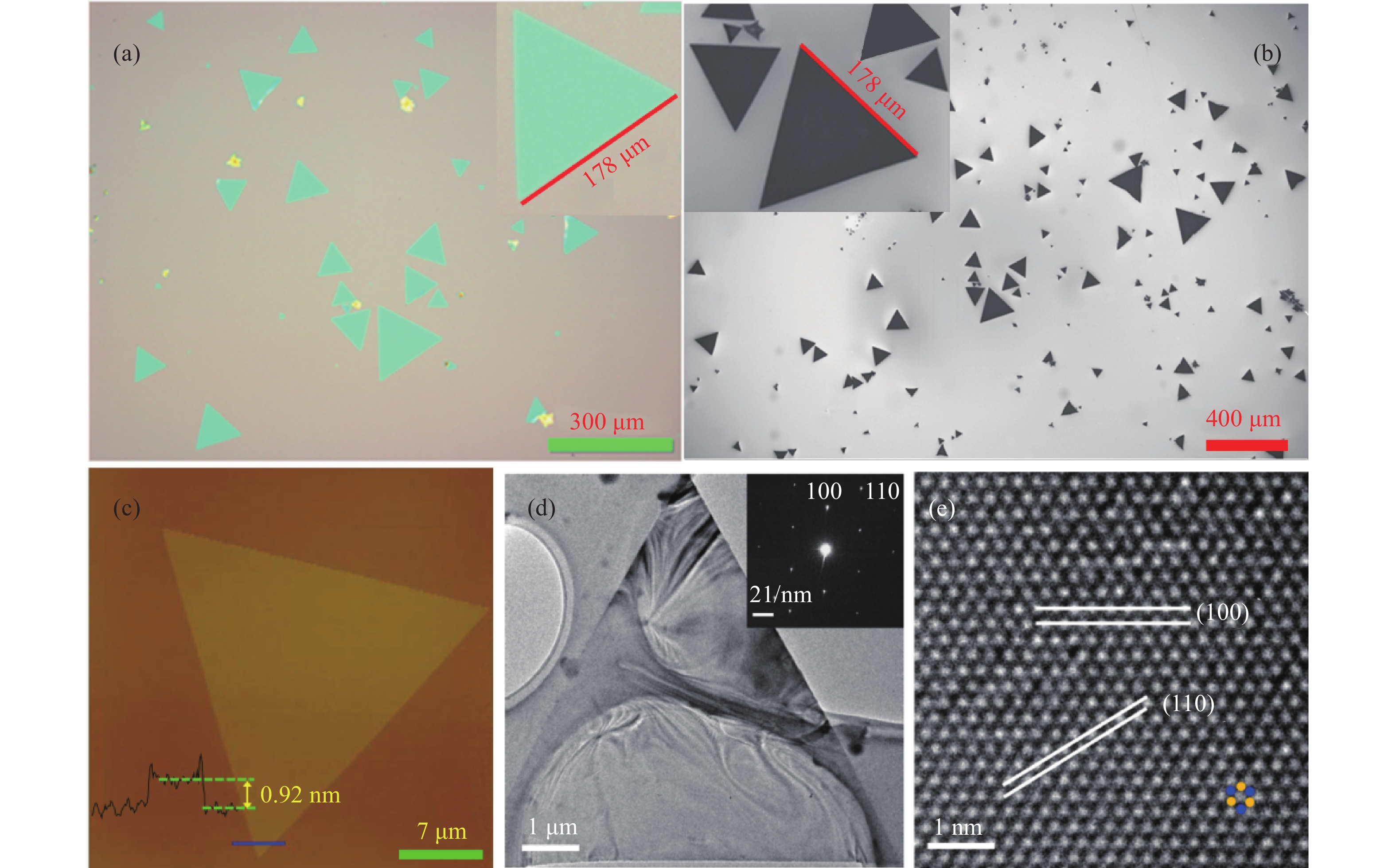
 Abstract
Abstract FullText HTML
FullText HTML PDF 1212KB
PDF 1212KB